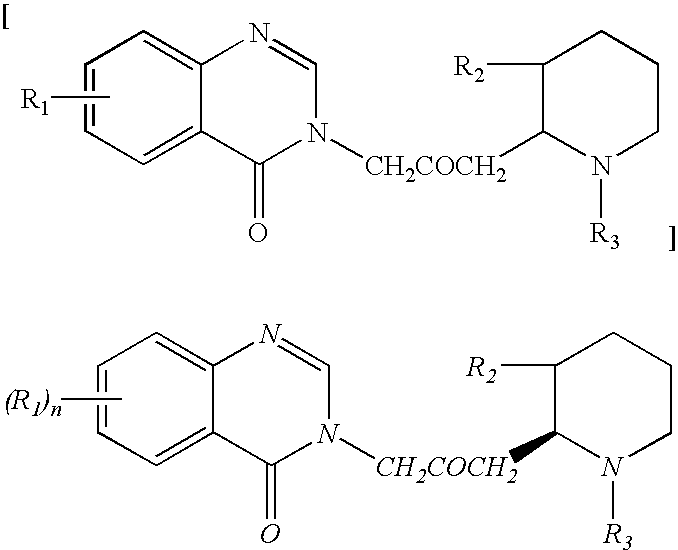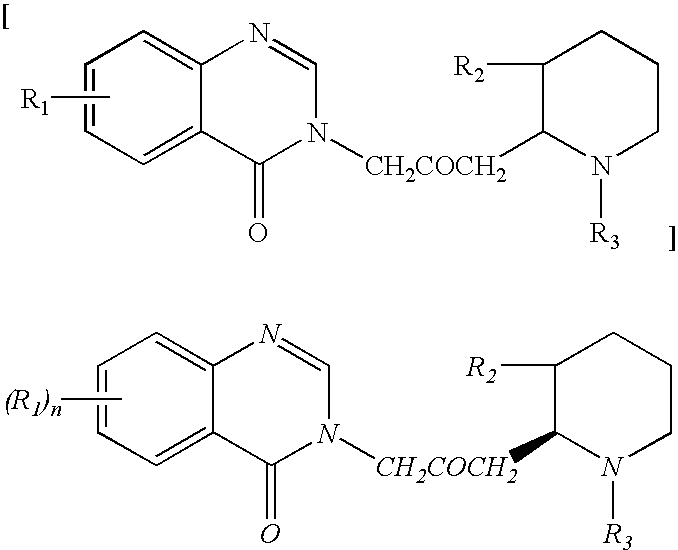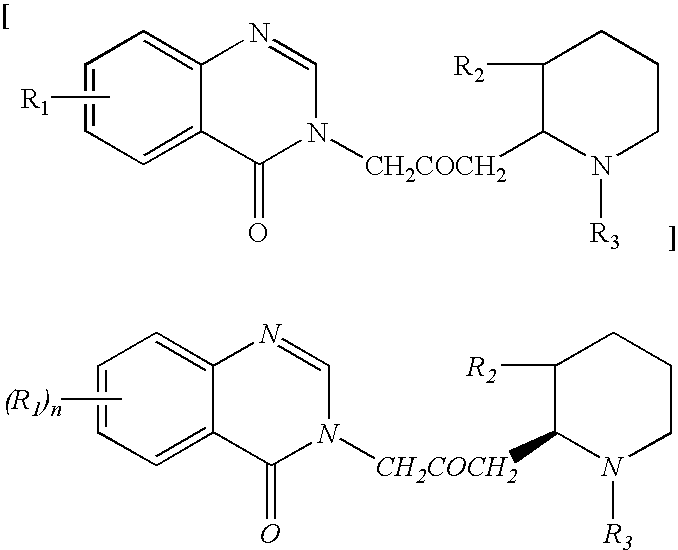Treatment and prevention of adhesions
a technology for adhesions and skin, applied in the field of adhesion treatment and prevention, can solve the problems of scar formation, skin scars can be both cosmetic and functional problems, restrict the nobility of joints, etc., and achieve the effects of reducing the number and severity of adhesions, and reducing the number of adhesions
- Summary
- Abstract
- Description
- Claims
- Application Information
AI Technical Summary
Benefits of technology
Problems solved by technology
Method used
Image
Examples
example 1
Involvement of Collagen in Adhesion Formation
The involvement of collagen in post-surgical adhesion formation in the abdomens of rats was studied. Briefly, collagen-specific staining techniques, as well as hybridization with a labelled collagen-specific genetic probe, demonstrate the importance of collagen as a component of adhesions, as shown in FIGS. 1A and 1B.
The experiments were performed as follows. First, the abdomen of the rats was shaved and prepared with iodine and alcohol. The abdominal cavity was entered through a mid-line incision. The small intestine was scraped from the duodenum down to from about 9 to about 10 cm from the cecum, until capillary bleeding occurred. To avoid drying, Hartman's solution at about 37.degree. C. was occasionally dripped on the intestine. After replacement of the intestine into the abdominal cavity, the abdomen was closed in two layers with continuous 00 chromic catgut suture. This method has been previously demonstrated to cause abdominal adhe...
example 2
Effect of Halofuginone on Collagen Gene Expression and Content
Halofuginone was shown to specifically inhibit collagen type I deposition and gene expression in surgically insulted abdominal tissue in rats, with the results given in FIG. 2. The experiment was performed as follows. Abdominal adhesions were induced in two groups of rats as described above in Example 1. A group of rats which did not undergo surgery served as a control. One group of the rats which underwent surgery received an i.p. injection of Halofuginone every day after the operation for 21 days. The rats were dosed according to body weight, with 1 ug of Halofuginone given per 25 g of body weight. The other group of rats which underwent surgery received saline injections for 21 days.
After 21 days, tissue samples were taken for histological analysis as described above. Both collagen type I content of the tissue, and the level of collagen a(1)I gene expression were measured. The results are shown in FIG. 2.
FIG. 2A shows ...
example 3
Effect of Halofuginone on Adhesion Number
Two different tests were performed to assess the effect of Halofuginone on the number and severity of adhesions in rats which underwent surgery. Both tests showed that Halofuginone reduced both the number and severity of adhesions. The experimental method was as follows. For the first test, three groups of rats were prepared as described above in Example 2. At the end of 21 days, the rats were weighed and the number and severity of adhesions were determined according to a double-blind procedure.
In the double-blind procedure, adhesions were classified according to the following grading: 0=no adhesions; I=a thin, filmy, easily separated adhesion; II=several thin adhesions; III=a thick, broad adhesion and IV=several thick adhesions. Clearly, 0 is the least severe and IV is the most severe grade.
Table 1 shows the results of Halofuginone treatment on the number and severity of rats which underwent surgery. Group 1 is rats which underwent surgery, ...
PUM
| Property | Measurement | Unit |
|---|---|---|
| Time | aaaaa | aaaaa |
| Time | aaaaa | aaaaa |
| Angle | aaaaa | aaaaa |
Abstract
Description
Claims
Application Information
 Login to View More
Login to View More - R&D
- Intellectual Property
- Life Sciences
- Materials
- Tech Scout
- Unparalleled Data Quality
- Higher Quality Content
- 60% Fewer Hallucinations
Browse by: Latest US Patents, China's latest patents, Technical Efficacy Thesaurus, Application Domain, Technology Topic, Popular Technical Reports.
© 2025 PatSnap. All rights reserved.Legal|Privacy policy|Modern Slavery Act Transparency Statement|Sitemap|About US| Contact US: help@patsnap.com



